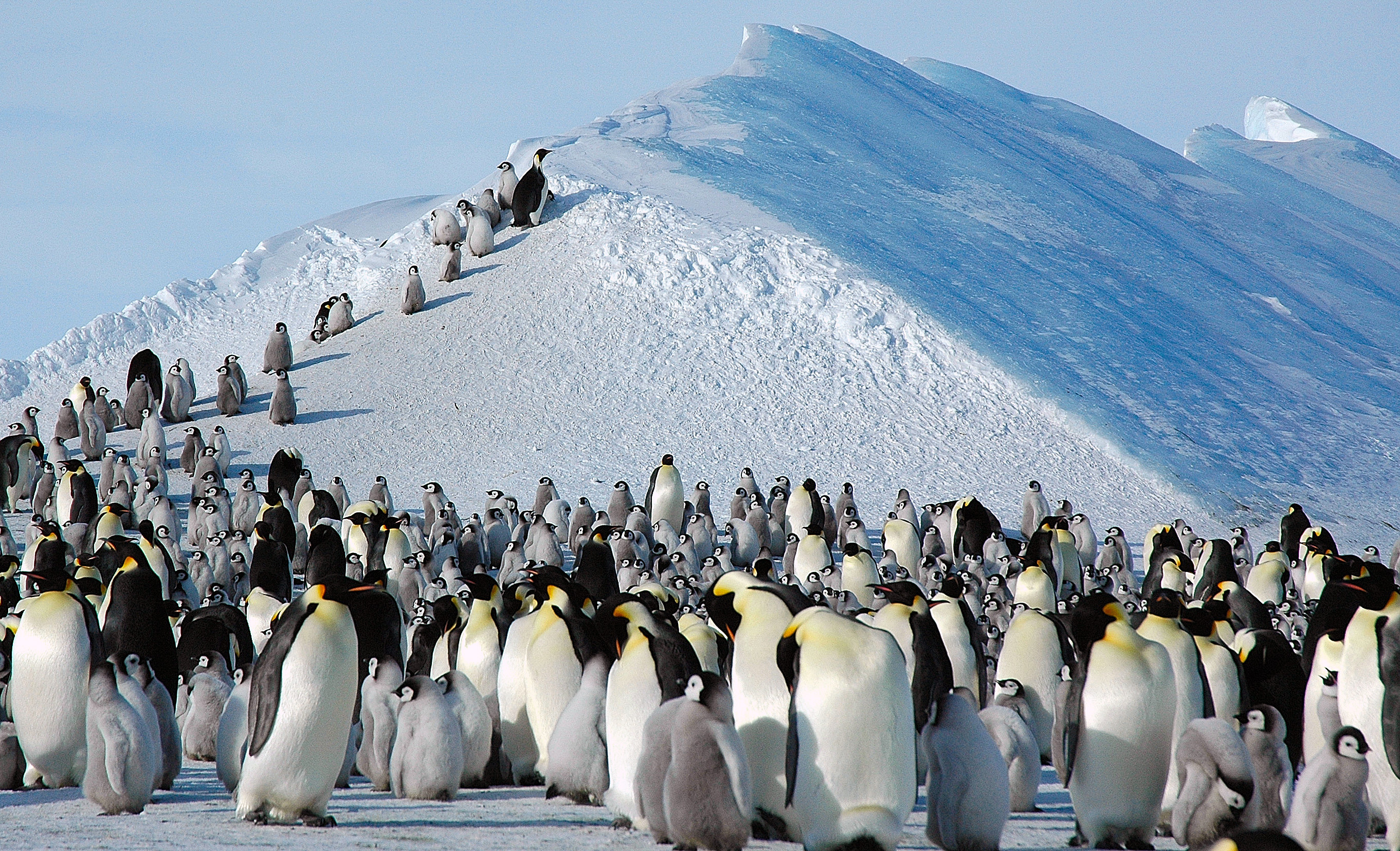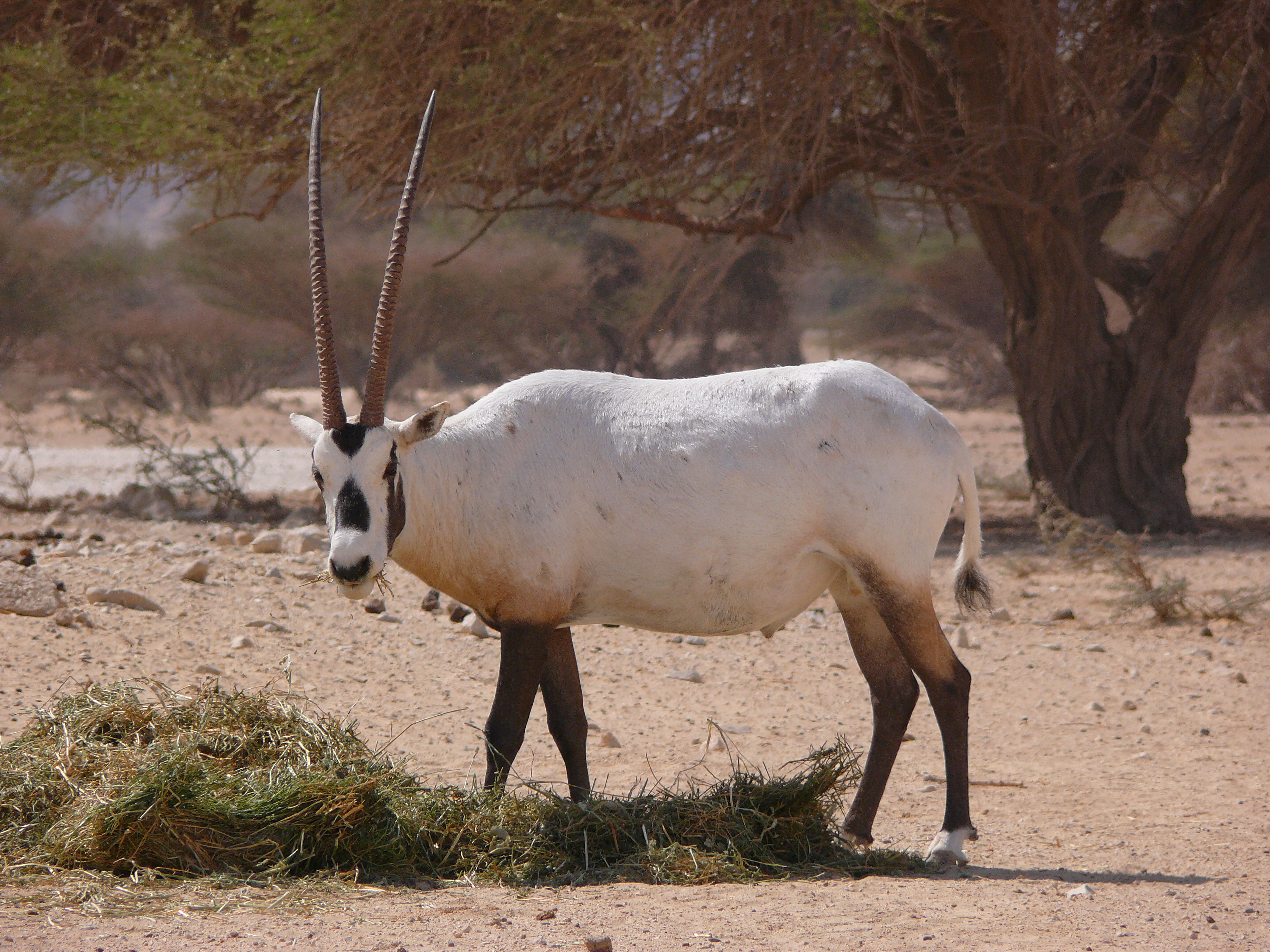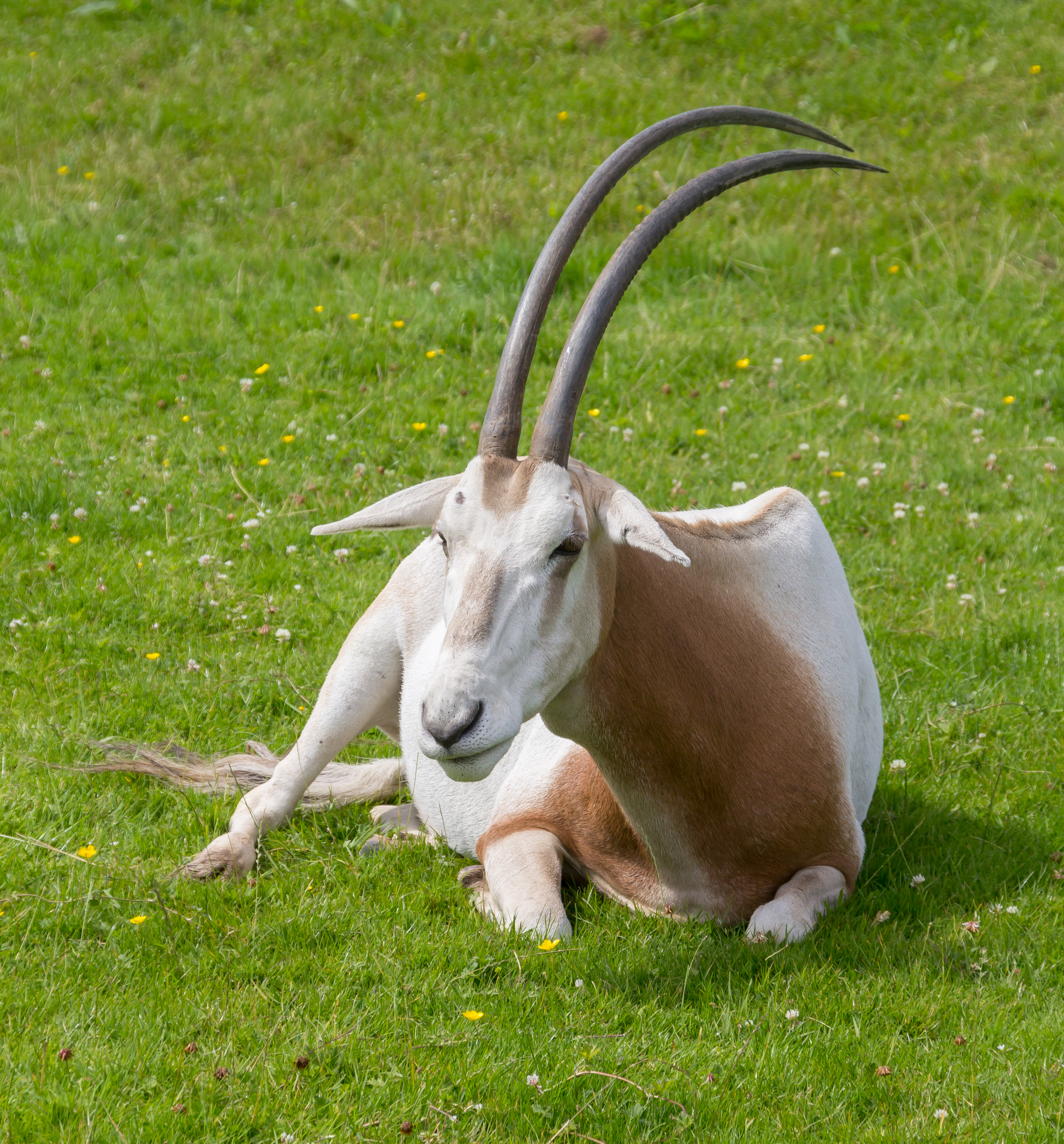|
Ouadi Rimé-Ouadi Achim Faunal Reserve
Ouadi-Rimé Ouadi-Hachim Faunal Reserve, is located in the Batha (region), Batha administrative region in the centre of Chad. It is an IUCN Category IV area, which was established in 1969. At – equivalent to the size of Scotland – it is one of the largest reserves in the world. Geography The Ouadi Rimé–Ouadi Achim, covering three habitats of Sahelian wooded grassland, sub-desert grassland (covers about 66% of the area), and desert, and is one of the largest reserves in Chad. Its terrain, with an elevation range of , has no prominent features except for an isolated patch of a remnant of volcanic eruption. It has a long line of dunes called the Goz Kerky that runs through the reserve in a north–south direction. The eastern part of the reserve has massifs which rise to a height of which drain a number of streams that flow through the reserve. The reserve also has flood plains which are inundated temporarily and along with the streams help in creation of the biodiversity of ... [...More Info...] [...Related Items...] OR: [Wikipedia] [Google] [Baidu] |
Chad
Chad, officially the Republic of Chad, is a landlocked country at the crossroads of North Africa, North and Central Africa. It is bordered by Libya to Chad–Libya border, the north, Sudan to Chad–Sudan border, the east, the Central African Republic to Central African Republic–Chad border, the south, Cameroon to Cameroon–Chad border, the southwest, Nigeria to Chad–Nigeria border, the southwest (at Lake Chad), and Niger to Chad–Niger border, the west. Chad has a population of 19 million, of which 1.6 million live in the Capital city, capital and largest city of N'Djamena. With a total area of around , Chad is the fifth-largest country in Africa and the List of countries and dependencies by area, twentieth largest nation by area. Chad has several regions: the Sahara desert in the north, an arid zone in the centre known as the Sahel, and a more fertile Sudanian Savanna zone in the south. Lake Chad, after which the country is named, is the second-largest wetl ... [...More Info...] [...Related Items...] OR: [Wikipedia] [Google] [Baidu] |
Cornulaca Monacantha
''Cornulaca monacantha'' is a species of flowering plant in the genus '' Cornulaca'', that is now included in the family Amaranthaceae, (formerly Chenopodiaceae). It is a desert plant found in the Middle East and the Sahara, and the southern end of its range is considered to delineate the edge of the desert. In Arabic it is known as ''had'' and ''djouri'', and the Tuareg people call it ''tahara''. It was first described in 1813 by the French botanist Alire Raffeneau Delile. Description ''Cornulaca monacantha'' is a straggling, branched, woody shrub growing to a height of . The stubby bluish-green leaves are scale-like and clasp the greyish, wiry stems. They each have a single stiff spine at the tip, hence the specific name ''monacantha''. The leaves turn yellow or white when the plant is dead. The orange-brown flowers appear singly in the woolly leaf axils between August and November. The calyx and petals are spiny, the perianth lobes being linear and leathery, with jagged tips ... [...More Info...] [...Related Items...] OR: [Wikipedia] [Google] [Baidu] |
Important Bird Area
An Important Bird and Biodiversity Area (IBA) is an area identified using an internationally agreed set of criteria as being globally important for the conservation of bird populations. IBA was developed and sites are identified by BirdLife International. There are over 13,000 IBAs worldwide. These sites are small enough to be entirely conserved and differ in their character, habitat or ornithological importance from the surrounding habitat. In the United States the program is administered by the National Audubon Society. Often IBAs form part of a country's existing protected area network, and so are protected under national legislation. Legal recognition and protection of IBAs that are not within existing protected areas varies within different countries. Some countries have a National IBA Conservation Strategy, whereas in others protection is completely lacking. History In 1985, following a specific request from the European Economic Community, Birdlife International dr ... [...More Info...] [...Related Items...] OR: [Wikipedia] [Google] [Baidu] |
Waterbird
A water bird, alternatively waterbird or aquatic bird, is a bird that lives on or around water. In some definitions, the term ''water bird'' is especially applied to birds in freshwater ecosystems, although others make no distinction from seabirds that inhabit marine environments. Some water birds (e.g. wading birds) are more terrestrial while others (e.g. waterfowls) are more aquatic, and their adaptations will vary depending on their environment. These adaptations include webbed feet, beaks, and legs adapted to feed in the water, and the ability to dive from the surface or the air to catch prey in water. The term ''aquatic bird'' is sometimes also used in this context. A related term that has a narrower meaning is waterfowl. Some piscivorous birds of prey, such as ospreys, sea eagles, fish eagles, fish owls, and fishing owls, hunt aquatic prey but do not stay in water for long and live predominantly over dry land, and are not considered water birds. The term waterbird ... [...More Info...] [...Related Items...] OR: [Wikipedia] [Google] [Baidu] |
Palearctic
The Palearctic or Palaearctic is a biogeographic realm of the Earth, the largest of eight. Confined almost entirely to the Eastern Hemisphere, it stretches across Europe and Asia, north of the foothills of the Himalayas, and North Africa. The realm consists of several bioregions: the Mediterranean Basin; North Africa; North Arabia; Western, Central and East Asia. The Palaearctic realm also has numerous rivers and lakes, forming several freshwater ecoregions. Both the eastern and westernmost extremes of the Paleartic span into the Western Hemisphere, including Cape Dezhnyov in Chukotka Autonomous Okrug to the east and Iceland to the west. The term was first used in the 19th century, and is still in use as the basis for zoogeographic classification. History In an 1858 paper for the ''Proceedings of the Linnean Society'', British zoologist Philip Sclater first identified six terrestrial zoogeographic realms of the world: Palaearctic, Aethiopian/ Afrotropic, Indian/ I ... [...More Info...] [...Related Items...] OR: [Wikipedia] [Google] [Baidu] |
Bird Migration
Bird migration is a seasonal movement of birds between breeding and wintering grounds that occurs twice a year. It is typically from north to south or from south to north. Animal migration, Migration is inherently risky, due to predation and mortality. The Arctic tern holds the long-distance migration record for birds, travelling between Arctic breeding grounds and the Antarctic each year. Some species of Procellariiformes, tubenoses, such as albatrosses, circle the Earth, flying over the southern oceans, while others such as Manx shearwaters migrate between their northern breeding grounds and the southern ocean. Shorter migrations are common, while longer ones are not. The shorter migrations include altitudinal migrations on mountains, including the Andes and Himalayas. The timing of migration seems to be controlled primarily by changes in day length. Migrating birds navigate using celestial cues from the Sun and stars, the Earth's magnetic field, and mental maps. Histor ... [...More Info...] [...Related Items...] OR: [Wikipedia] [Google] [Baidu] |
Reintroduction
Species reintroduction is the deliberate release of a species into the wild, from captivity or other areas where the organism is capable of survival. The goal of species reintroduction is to establish a healthy, genetically diverse, self-sustaining population to an area where it has been extirpated, or to augment an existing population. Species that may be eligible for reintroduction are typically threatened or endangered in the wild. However, reintroduction of a species can also be for pest control; for example, wolves being reintroduced to a wild area to curb an overpopulation of deer. Because reintroduction may involve returning native species to localities where they had been extirpated, some prefer the term "reestablishment". Humans have been reintroducing species for food and pest control for thousands of years. However, the practice of reintroducing for conservation is much younger, starting in the 20th century. Methods for sourcing individuals There are a variety of app ... [...More Info...] [...Related Items...] OR: [Wikipedia] [Google] [Baidu] |
Extinct In The Wild
A species that is extinct in the wild (EW) is one that has been categorized by the International Union for Conservation of Nature as only consisting of living members kept in captivity or as a naturalized population outside its historic range. Classification requires exhaustive surveys conducted within the species' known habitat with consideration given to seasonality, time of day, and life cycle.IUCN. (2003). Guidelines for Application of IUCN Red List Criteria at Regional Levels: Version 3.0'' IUCN Species Survival Commission. IUCN, Gland, Switzerland and Cambridge, UK. ii + 26 pp. Once a species is classified as EW, the only way for it to be downgraded is through reintroduction. Not all EW species are rare. An example is the ''Brugmansia'' genus, where all seven species are widely cultivated, but none are found in the wild. Ultimately, the purpose of preserving biodiversity is to maintain ecological function to prevent ecological extinction. Examples Examples of specie ... [...More Info...] [...Related Items...] OR: [Wikipedia] [Google] [Baidu] |
Scimitar Oryx
The scimitar oryx (''Oryx dammah''), also known as the scimitar-horned oryx and the Sahara oryx, is an '' Oryx'' species that was once widespread across North Africa and parts of West Africa and Central Africa. In 2000, it was declared extinct in the wild on the IUCN Red List, but in 2023 it was downlisted to endangered, with a reintroduced population in Chad. This particular oryx is adapted to harsh desert conditions and can survive for months or even years without drinking water. A grazing animal, it derives most of its daily moisture intake from plants. The decline of the scimitar oryx population began as a result of climate change during the Neolithic period, and later it was hunted extensively for its horns. Today, it is bred in captivity in special reserves in Tunisia, Morocco, and Senegal, and on private exotic animal ranches in the Texas Hill Country, United States. In 2016, a reintroduction program was launched and currently a small herd has been successfully reintrodu ... [...More Info...] [...Related Items...] OR: [Wikipedia] [Google] [Baidu] |
Addax
The addax (''Addax nasomaculatus''), also known as the white antelope and the screwhorn antelope, is an antelope native to the Sahara Desert. The only member of the genus ''Addax'', it was first described scientifically by Henri de Blainville in 1816. As suggested by its alternative name, the pale antelope has long, spiral horns – typically in females and in males. Males stand from at the shoulder, with females at . They are sexually dimorphic, as the females are smaller than the males. The colour of the coat depends on the season – in the winter, it is greyish-brown with white hindquarters and legs, and long, brown hair on the head, neck, and shoulders; in the summer, the coat turns almost completely white or sandy blonde. The addax mainly eats grasses and leaves of any available shrubs, leguminous herbs and bushes. They are well-adapted to exist in their desert habitat, as they can live without water for long periods of time. Addax form herds of five to 20 members, ... [...More Info...] [...Related Items...] OR: [Wikipedia] [Google] [Baidu] |
Northeast African Cheetah
The Northeast African cheetah (''Acinonyx jubatus soemmeringii'') is a cheetah subspecies occurring in Northeast Africa. Contemporary records are known in South Sudan, Uganda, and Ethiopia, but population status in Eritrea, Djibouti, Somalia, Kenya, and Sudan is unknown. It was first described under the scientific name ''Cynailurus soemmeringii'' by the Austrian zoologist Leopold Fitzinger in 1855 on the basis of a specimen from Sudan’s Bayuda Desert brought to the Tiergarten Schönbrunn in Vienna. It is also known as the Sudan cheetah. In the 1970s, the cheetah population in Ethiopia, Sudan and Somalia was roughly estimated at 1,150 to 4,500 individuals. In 2024, it was estimated that 533 individuals live inside protected areas in this region; the number of individuals living outside protected areas is unknown. This subspecies is more closely related to the Southern African cheetah than to Saharan cheetah populations. Results of a phylogeographic analysis indicate that t ... [...More Info...] [...Related Items...] OR: [Wikipedia] [Google] [Baidu] |
Red-fronted Gazelle
The red-fronted gazelle (''Eudorcas rufifrons'') is widely but unevenly distributed gazelle across the middle of Africa from Senegal to northeastern Ethiopia. It is mainly resident in the Sahel zone, a narrow cross-Africa band south of the Sahara, where it prefers arid grasslands, wooded savannas and shrubby steppes. One authority considers Thomson's gazelle (''E. thomsoni''), of East Africa, a subspecies of red-fronted gazelle. The red-fronted gazelle was formerly considered a member of the genus ''Gazella'' within the subgenus ''Eudorcas'' before ''Eudorcas'' was elevated to generic status. Taxonomy The scientific name of the red-fronted gazelle is ''Eudorcas rufifrons''. It was first described by British zoologist John Edward Gray. * ''Eudorcas rufifrons centralis'' W. Schwarz, 1914 – eastern Chad red-fronted gazelle * ''E. r. hasleri'' Pocock, 1912 – north Nigeria red-fronted gazelle. * ''E. r. kanuri'' Schwarz, 1914 – Kanuri red-fronted gazelle * ''E. r. laevipes'' ... [...More Info...] [...Related Items...] OR: [Wikipedia] [Google] [Baidu] |









